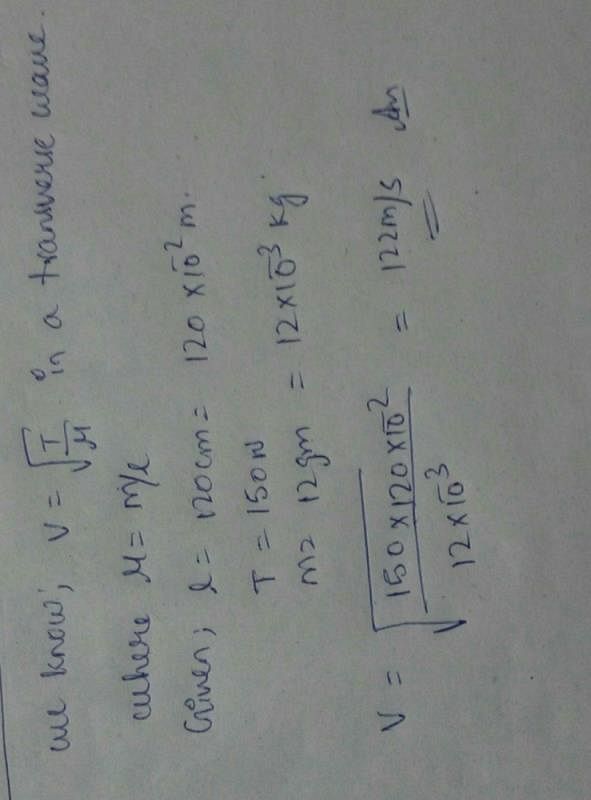Test: Progressive Waves - NEET MCQ
10 Questions MCQ Test Topic-wise MCQ Tests for NEET - Test: Progressive Waves
Waves associated with moving protons, electrons, neutrons, atoms are known as
Maximum destructive inference between two waves occurs when the waves are out of the phase by
| 1 Crore+ students have signed up on EduRev. Have you? Download the App |
In what types of waves can we find capillary waves and gravity waves?
To the nearest order of magnitude, how many times greater than the speed of sound is the speed of light?
A steel wire 120 cm long has mass 12 g attached to it. If the wire is under a tension of 150N, what is the speed of transverse wave in the wire?
In a wave which quantity is transferred from one point to the other.
In a transverse wave, the constituents of the medium oscillate ___________to the direction of wave propagation and in a longitudinal wave they oscillate ________to the direction of propagation.
The ratio of velocity of sound in hydrogen and oxygen at STP is __________
|
9 docs|1272 tests
|


 is related to the time period T by
is related to the time period T by











